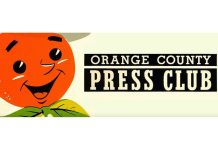“Signs, signs, everywhere a sign …”
So the song goes.
“Blocking out the scenery, breaking my mind. Do this. Don’t do that. Can’t you read the sign?”
Oh, we can read them all right, can’t hardly miss them. One man’s blight is another man’s road to an elected position.
Signs are everywhere and our mailboxes are full. So what is the environmentally best campaign fodder? What becomes of all that political stuff?
First off, no one I can see makes political marketing decisions considering end of use and environmental impacts. In fact, you could argue the fox is guarding the henhouse. Who would get elected then regulate the means that got them into office, and will be necessary to retain a seat in re-election?
I loaded some temporary political yard signs into my car, and then it hit me, like an uppercut. My eyes watered as the signs off-gassed. Then, when it was too late, I considered what would become of the signs, on Nov. 3. The coating that makes the signs waterproof, like a to-go coffee cup, make them a challenge to recycle. Trying to get politicians to reduce is like teaching a pig to sing – it frustrates you and annoys the pig.
So, the only option left from the Reduce, ReUse, Recycle mantra is ReUse.
The signs that are corrugated plastic, I have not found a ReUse for those. But the polyboard ones can become art. The other side of the campaign slogan is a white surface, made of durable “canvas.” You could donate them to an art teacher. You could keep a couple for yourself. With Thanksgiving soon, I took one, kept the crease and cut it to look like turkey. I used the wire to be the rib cage, and also the feet.
I always find it amusing to see candidates talk about quality of life in their platform, then hire a professional sign distributor to tack them on every possible location, creating visual blight. But at unit costs as low $4, with signs placed at high-traffic locations, you cannot beat the cost per impression. So it just makes too much financial sense.
One needs to raise money, but mail is effective. I have been classically trained by large corporations as a behavior-based targeted marketer. So I am attracted to targeting with segmentation by party affiliation, the number of times one has voted, or by geography. Depending on when, you can eliminate those that have already voted absentee. Targeting increases efficiency and effectiveness, and targeting eliminates waste, provided your message is clear and relevant.
The local recycler likes this political activity – the more the merrier. When there is a polarizing issue, or the unions produce “hit pieces,” ones that negatively target a candidate on an issue, right or wrong, the recycler wants to hug them. Off to China after bundling.
Slate mailers, forget about it. The only vetting is whether the check clears. Any candidate or issue can participate. Can’t believe people actually fall for those.
Social media is highly effective. Aside from the labor to produce content, and sometimes candidates and opponents produce it all by themselves, it is free. And low in environmental impacts, provided your spouse allows you the time.
E-mail through a Constant Contact, for instance, is a low-cost solution, and a great way to push relevant content. This activity can create viral marketing, which can spread a message, providing a two-way communication that can be measured with insights on open and/or forward it. Premium versions indicate which content was clicked, and other insights to refine a future communication. But both social media and e-mail often lack the scale necessary to carry a vote.
Coffees hosted by influential community members are effective, where high-propensity voters sip coffee and eat treats, while getting inspired in a comfortable setting.
Newspapers remain an effective marketing tool to cover a mass audience, and are often a must in high-profile, city-wide campaigns. And, the Newport Beach Independent offers color to target the educated, upscale and influential audience. A weekly distribution provides the perfect quantity to support your at home composting efforts.
I grew up in Boston. To get my grandfather and mother elected, we printed signs. An ordinance would not allow signs to be placed, they had to be hand held. So, our family would buy coffee, meet at a central location, and hand out the signs on long poles. Assignments were given for which high-traffic locations would go to whom for how long. Great memories of holding signs and jockeying for position against political rivals. It reduced blight and increased community participation.
Someday, maybe, coming to a street corner near you?
What Eco Holiday gifts are you planning? Email Jim FitzEco@gmail.com




